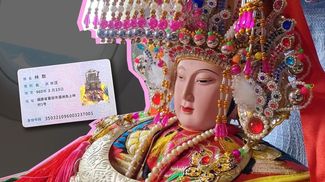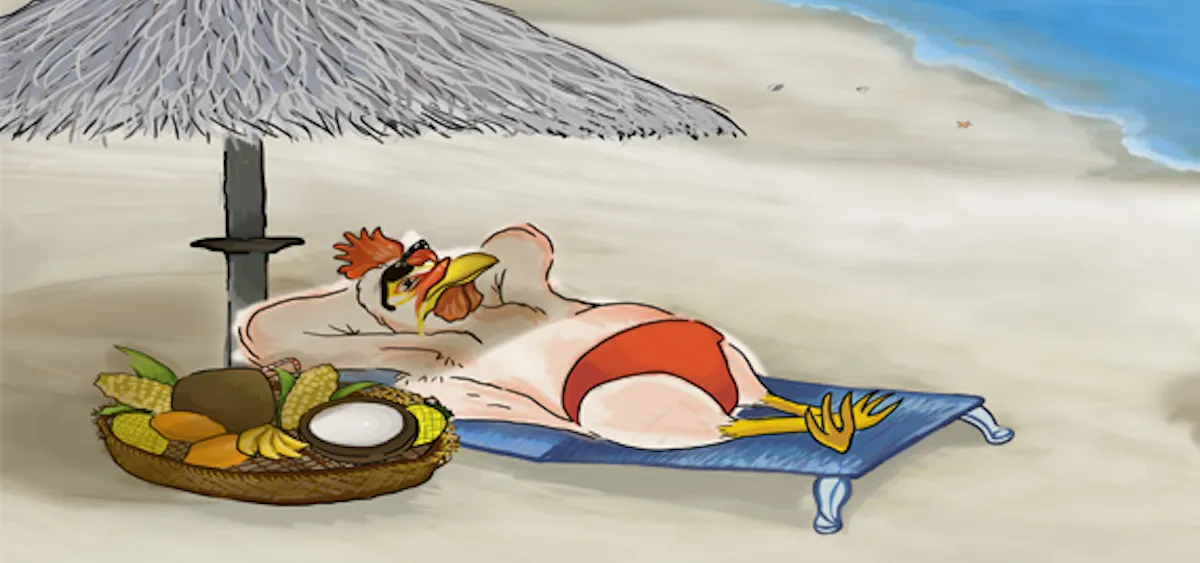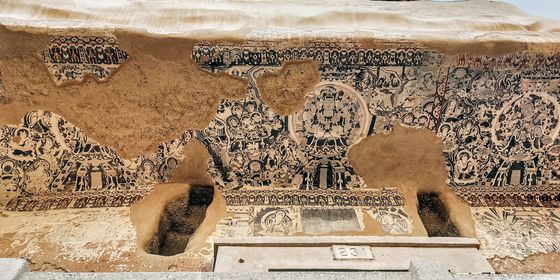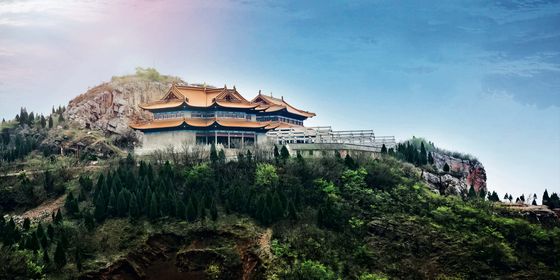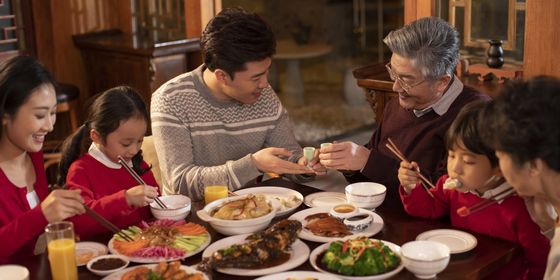Buttery, plump, aromatic – you’d be mad not to give this Wenchang Chicken recipe a go
The idyllic island of Hainan, located just south of Guangdong’s tip, is known more as a sunny holiday destination than a bastion of traditional culture. In the old days, criminals and disgraced officials were sent to Hainan to live in exile, while today the island is packed with entrepreneurial hawkers and overpriced resorts. So you might be surprised to learn that Hainan is the home of one of China’s most illustrious chicken dishes: Wenchang chicken.
Named for the city of its origin, Wenchang chicken is Hainan most prestigious dish and a must-eat delicacy for the flocks of tourists that descend on the area in search of a tropical getaway. The dish is renowned for its tender and slippery meat, thin skin and crisp bones, aromatic but mellow fragrance and (best of all) its fatty but grease-free texture.
The secret to Wenchang chicken isn’t in the preparation—which is simple to the point of starkness—but in the chickens themselves, which are fattened up on a rich diet that normal livestock can only dream of. But it’s not all fun and games for the birds—according to a Qing Dynasty (1636 AD-1911 AD) book called《岭南杂事诗抄》(Lǐngnán Záshì Shīchāo), the key to real Wenchang Chicken was (drumroll) a kidney transplant: “Wenchang County chickens boast the most delicious taste, like game meat,” the book reads. “Cut out a rooster’s kidney and plant it in a hen’s abdomen. The roosters will no longer crow in the morning, while the hens will no longer lay eggs ; their feathers will wither and die. But the meat is exceptionally fat and tender! As this method has been tried in various places but only succeeded here, it’s earned the name Wenchang chicken.”
Despite what sounds like a rather medieval operation, mature Wenchang chickens should ideally be the picture of health, with shining bright feathers, short wings and a plump body. Despite their rich diet, these birds are on the small side and usually weigh around 1.5 kilos—in this case, it’s quality, not quantity, that counts.
As with other Chinese signature dishes, Wenchang chicken features in a few classic stories that give the recipe cultural clout. In the Ming Dynasty (1368-1644), an officer from Wenchang County dedicated several of his hometown chickens to the emperor. After sampling the offerings, the emperor exclaimed: “These chickens are from a civilized place renowned for producing outstanding people; raised in such rich a place, the chickens have absorbed the richness of their culture! They truly deserve to be called Wenchang chickens!” ( 鸡出文化之乡,人杰地灵,文化昌盛,鸡亦香甜,真乃文昌鸡也! Jī chū wénhuà zhī xiāng, rénjiédìlíng, wénhuà chāngshèng, jī yì xiāngtián, zhēn nǎi Wénchāng jī yě!) With the imperial blessing secured, Wenchang chicken gained prestige throughout China.
Wenchang chicken is usually made in the baizhan (白斩, plain chopped-up) or baiqie (白切, plain and sliced) way, which involves first boiling and slicing the chicken, then dipping the pieces in cold sauce. This helps retain the chicken’s original taste while allowing the sauce to warm on the skin. Below we list three sauces you can use: the first is salty with a touch of ginger and garlic spice; the second is sweet and sour; and the third sauce is a fragrant mix of ginger and spring onion. Whichever option you choose, don’t let all the painstaking preparation go to waste by skimping on the presentation. All the ingredients for the dipping sauce must be organic and fresh. Local people also use leftover chicken oil and broth to cook their rice, making for the perfect side dish: Hainan chicken rice (海南鸡饭, Hǎinán jī fàn).
There’s a saying on Hainan Island that “if you don’t have Wenchang chicken, a feast is impossible” (无没有文昌鸡不成席, Wú méiyǒu wénchāng jī bùchéng xí) or more colloquially, “it’s just not a party without Wenchang Chicken!” Below, we do our best to help you recreate its special flavor so you can get your party started without a hitch.
Recipe:
1 whole chicken, about 1.5kg
整鸡 zhěngjī
2 tablespoons salt
盐 yán
80g ginger, crushed
姜末 jiāngmò
50g spring onions, cut in 5cm pieces
香葱 xiāng cōng
3 tablespoons sesame oil
芝麻油 zhīmayóu
1. Find a pot big enough for your chicken, then fill with water and boil. Add the crushed ginger and spring onions.
2. Place the chicken in the boiling water for 10 seconds and then remove. Bring the water to a boil again, and repeat three times.
3. The third time, leave the chicken in the pot. When the water has reached boiling point, reduce the heat and let simmer for a half hour, or less if using a smaller bird. To check if the chicken is done, stick a chopstick into the flesh under the leg. If the juice runs clear, the chicken is cooked. If you are not sure, test with a meat thermometer.
4. Make your sauce of choice: salty, sweet-and-sour or fragrant.
5. Transfer the chicken to a plate and drizzle with sesame oil. Leave it to cool before cutting into bite sized pieces. Serve together with sauces and Hainan chicken rice (optional).
Sauces
Option 1 – Salty
4 tablespoons minced ginger
2 tablespoons minced garlic
6 tablespoons light soy sauce
Option 2 – Sweet-and-Sour
6 tablespoons vinegar
3 teaspoons sugar
1/2 teaspoon salt
2 tablespoons minced ginger
1 tablespoon minced garlic
Option 3 – Fragrant
100g sliced spring onions
3 tablespoons minced ginger
1 teaspoon salt
1 tablespoon soy sauce
50ml hot oil
Combine the spring onions and ginger together and pour over the hot oil while mixing in the salt and soy sauce to taste.

